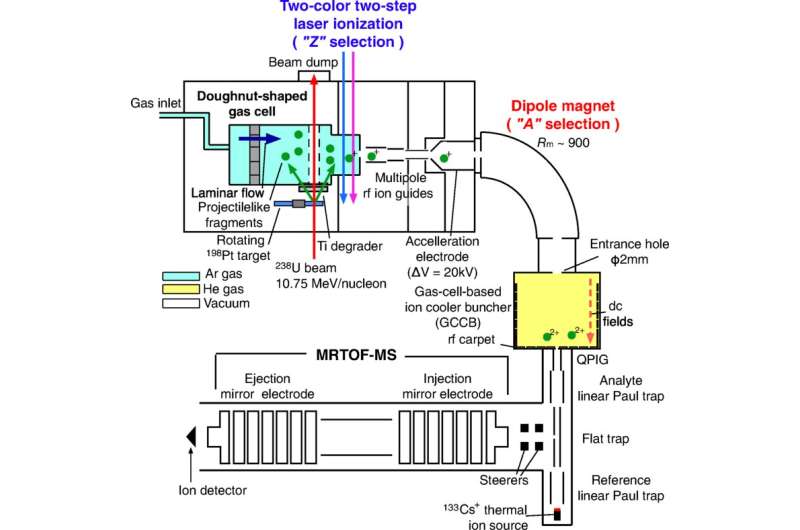April 5, 2023 report
This article has been reviewed according to Science X's editorial process and policies. Editors have highlighted the following attributes while ensuring the content's credibility:
fact-checked
peer-reviewed publication
trusted source
proofread
Previously unknown isotope of uranium discovered

A team of nuclear physicists affiliated with multiple institutions in Japan, working with a colleague from Korea, has discovered a previously unknown uranium isotope with atomic number 92 and mass 241. In their study, reported in the journal Physical Review Letters, the group forced the isotope to reveal itself and tested the results of their efforts to show that what they had found was indeed uranium-241.
Over the past several decades, physicists have found that determining the properties of neutron-rich isotopes is difficult due to problems caused in creating them. For that reason, ongoing research has been looking for new ways to synthesize them under lab conditions. In this new effort, the research team tried a new approach—they fired a sample of unranium-238 nuclei at a sample of platinum-198 nuclei using an isotope separation system. Such interactions are known to result in multinucleon transfer, in which isotopes swap neutrons and protons. The collision resulted in the creation of a large number of fragments, which the researchers studied to determine their makeup.
They found evidence of 19 heavy isotopes holding from 143 to 150 neutrons. Each was measured using time-of-flight mass spectrometry, a technique that involves determining the mass of a traveling ion by tracking the time it takes to travel a given distance when its initial acceleration is known. The research team noted that most of the isotopes they measured had never been measured before. They also noted that one of them, uranium-241, had never been observed before and that it marks the first time since 1979 that a neutron-rich uranium isotope has been discovered. The researchers also calculated that uranium-241 likely has a half-life of just 40 minutes.
The technique used by the team represents a pathway to better understanding the shapes of large nuclei associated with the heavy elements, which could yield changes to models used to build nuclear power plants and weapons and to theories describing the behavior of exploding stars. The research team notes that that their method of discovery could be used to learn more about other heavy isotopes and also, perhaps, to discover new ones.
More information: T. Niwase et al, Discovery of New Isotope U241 and Systematic High-Precision Atomic Mass Measurements of Neutron-Rich Pa-Pu Nuclei Produced via Multinucleon Transfer Reactions, Physical Review Letters (2023). DOI: 10.1103/PhysRevLett.130.132502
Journal information: Physical Review Letters
© 2023 Science X Network





















